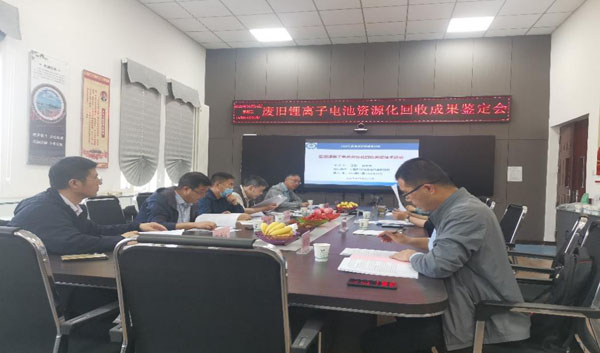On June 14, the Science and Technology Department of Qinghai Province organized a scientific achievement evaluation meeting of the Qinghai Institute of Salt Lake "Research on Key Technologies for Recycling Waste Lithium-ion Batteries". The panel believes that the project has developed and applied clean and efficient technology for the recycling process of waste lithium batteries, and has achieved a number of innovative results, which generally reach the international advanced level. This means that important progress has been made in this field by the Institute.
Under the guidance of the "dual carbon" goal, the new energy industry has developed rapidly in China. In 2021, China sold 3.521 million pure electric vehicles, and it is predicted to exceed 5 million in 2022, with a market share of over 18%. (According to the China Automobile Association) The explosive growth of electric vehicle sales has driven the growth in demand for power lithium-ion batteries. It is estimated that the globally installed capacity of power lithium-ion batteries will reach 668GWh in 2022. However, China lacks strategic resources such as lithium, nickel and cobalt, and relies on imports heavily. Lithium-ion batteries will enter the phase-out cycle after 5 to 8 years of use, and are in urgent need of recycling. It is estimated that the waste lithium-ion batteries that need to be recycled will increase from 200,000 tons in 2020 to 3 million tons in 2030. At that time, the market is expected to exceed 150 billion yuan, which is a promising future. Therefore, how to achieve green and efficient recycling while avoiding secondary pollution is particularly critical.
Given the common problems of the lithium-ion battery recycling industry, such as the lack of special equipment, the lengthy recycling process, and the high emission intensity of the wastes, the team of researcher Wang Min of the Qinghai Institute of Salt Lake has developed a precise classification and short-process regeneration technology of waste lithium-ion batteries according to the composition and structural characteristics of lithium-ion batteries. Since the implementation of the project, it has published 6 SCI papers, applied for 10 invention patents (7 patents authorized), and participated in the formulation of 8 standards about waste lithium-ion battery recycling, including 1 international standard, 2 industry standards, and 5 group standards. A 500-ton/year waste lithium-ion battery recycling pilot line has been established.
The research team applied the membrane separation technology to extract lithium from acid leaching solution, optimized the lithium extraction process, and the main content of the recovered lithium carbonate reached 99.69%. The ternary precursor is prepared and the cathode material is synthesized. After testing, its electrochemical performance is comparable to that of the pure new material, which greatly shortens the regeneration process and realizes green and efficient recycling.
The development of recycling technology for waste lithium batteries in this project is expected to solve the environmental pressure caused by a large number of waste lithium batteries. The green and environmentally friendly physical separation process is adopted to reduce the use of chemical reagents and avoid secondary pollution during the recycling process. It realizes the comprehensive recycling and utilization of valuable metals of waste batteries, maximizes the resource attributes of waste batteries, and is of great significance to the development of the circular economy.
